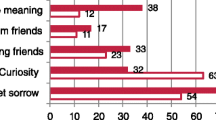Abstract
Objective: To explore the multitude possible factors associated with HIV in a population of female injecting drug users (IDUs) in Madrid, Spain. Design: A cross-sectional study was undertaken and because of the lack of sampling frame in this population, a convenience sample was recruited from drug treatment, methadone services and street settings. Methods: Face to face interviews were conducted with 304 female IDUs during October 1995–March 1996. HIV status was determined from antibody testing of blood samples or from written confirmation of HIV test results from a physician. A hierarchical logistic regression model was used to identify direct and indirect relationships with HIV prevalence. Results: HIV prevalence in the sample of female IDUs for which HIV status was known (n = 262) was 63%. Factors independently associated with HIV prevalence in the regression analysis included: having a regular HIV positive sexual partner [odds ratio (OR): 12.2], age over 34 years (OR: 3.4), no fixed address (OR: 2.9), co-infection with a sexually transmitted infection (STI) in the last year (OR: 2.8) and ever shared needles (OR: 2.6). Conclusions: The documentation of the context of risk behaviour in female IDU is important to predict the course of the epidemic and to develop prevention strategies. The sexual partners of female IDUs in Spain are important components in explaining the HIV epidemic in this population as other risk factors, including high risk drug taking behaviour. The findings also highlight the need to target homeless IDUs women and inmate women with outreach services offering preventive interventions. More effective STI prevention and control strategies are also warranted.
Similar content being viewed by others
References
European Centre for the Epidemiological Monitoring of AIDS: HIV/AIDS Surveillance in Europe, Halfyearly report no. 61, June 30, 1999. Saint-Maurice: European Centre for the Epidemiological Monitoring of AIDS; 1999.
Centro Nacional de Epidemiologia. Registro Nacional del SIDA: Vigilancia Epidemiologica des SIDA en España. Informe trimestral no. 4, 1999 Madrid: Ministerio de Sanidad y Consumo, Instituto de Salud ‘Carlos III’, Subdireccion de Salud; 1999.
Hernandez-Aguado I, Bolumar F. Determinants of HIV-1 infection in intravenous drug users in Valencia, Spain, 1987–1991. Int J Epidemiol 1993; 22: 537–542.
Sopelana P, Dieguez A, Bautista L. Prevalencia de la infección por el virus de la inmunodeficiencia humana tipo 1 en drogodependientes de Madrid, durante un periódo de 5 años. Med Clin (Barc) 1991; 97: 601–603.
Lampinen TM, Joo E, Seweryn S, Hershow C, Wiebel W. HIV seropositivity in community-recruited and drug treatment samples of injecting drug users. AIDS 1992; 6: 123–126.
Estebanez PE: HIV Risk Behaviour in Female Injecting Drug Users in Madrid, Spain, PhD thesis. London (England): University of London; 2000.
Castilla J, Pollan M, Lopez-Abente. The AIDS epidemic among Spanish drug users: A birth cohort-associated phenomenon. Am J Public Health 1997; 87: 770–774.
Houweling H, Hamers FF, Termorshuizen F, et al. A birth cohort analysis of AIDS in Europe: High incidence among young persons at risk. AIDS 1998; 12: 85–93.
Fisher B, Hovell M, Hofstetter CR, Hough R. Risks associated with long-term homelessness among women: Battery, rape, and HIV infection. Int J Health Services 1995; 25: 351–359.
Nyarnathi A, Flaskerud J, Leake B. HIV-risk behaviors and mental health characteristics among homeless or drug-recovering women and their closest sources of social support. Nurs Res 1997; 46: 133–137.
Metsch LR, McCoy CB, McCoy HV, et al. Social influences: Living arrangements of drug using women at risk for HIV infection. Women Health 1998; 27: 1–2, 123–136.
Estebanez P, Aguilar MD, Fitch K, Zunzunegui MV, Béland F. Women, drugs and HIV/AIDS. Results of a multicentred European study. Int J Epidemiology 2000; 29: 734–743.
Nicolosi A., Correa Leite ML, Musicco M, et al. The efficiency of male-to-female and female-to-male sexual transmission of the human immunodeficiency virus: A study of 730 stable couples. Epidemiology 1994; 5: 570–575.
Nicolosi A, Correa Leite ML, Musicco M, et al. Parenteral and sexual transmission of human immunodeficiency virus in intravenous drug users: A study of seroconversion. Am J Epidemiol 1992; 135: 225–233.
Zangerle R, Fuchs D, Rossler H, et al. Trends in HIV infection among intravenous drug users in Innsbruck, Austria. J Acquir Immune Defic Syndr 1992; 5: 865–871.
Serraino D, Franceshi S, Vaccher E, et al. Risk factors for human immunodeficiency virus infection in 581 intravenous drug users, Northeast Italy, 1984–1988. Int J Epidemiol 1991; 20: 264–270.
Marmor M, Des Jarlais DC, Cohen H, et al. Risk factors of infection with human immunode.ciency virus among intravenous drug users in New York City. AIDS 1987; 1: 39–41.
Des Jarlais DC. The first and second decades of AIDS among injecting drug users. Brit J Addict 1992; 87: 374–353.
Vlahov D, Munoz A, Anthony J, et al. Association of drug injection patterns with antibody to human immunodeficiency virus type 1 among intravenous drug users in Baltimore, Maryland. Am J Epidemiol 1990; 132: 847–856.
Sasse H, Salmaso S, Conti S: Risk behaviour for VIH-1 infection in Italian drug users: Report from a multicenter study. First Drug User Multicenter Study Group. J Acquir Immune Defic Syndr 1989; 2: 486–496.
Beck EJ, Mandalia S, Leonard K, Griffith RJ, Harris JR, Miller DL. Case–control study of sexually transmitted diseases as co-factors for HIV-1 transmission. Int J STD AIDS 1996; 7: 34–38.
Holst E, Noveious B and Mardh P. Bacterial vaginosis: Microbiology and clinical findings. Eur J Clin Bacteriol 1987; 6: 536–541.
Latkin CA, Mandell W, Knowlton AR, et al. Gender differences in injection-related behaviors among injection drug users in Baltimore, Maryland. AIDS Educ Prev 1998; 10: 257–263.
Author information
Authors and Affiliations
Rights and permissions
About this article
Cite this article
Estébanez, P., Russell, N., Aguilar, M. et al. Determinants of HIV prevalence amongst female IDU in Madrid. Eur J Epidemiol 17, 573–580 (2001). https://doi.org/10.1023/A:1014563303831
Issue Date:
DOI: https://doi.org/10.1023/A:1014563303831



